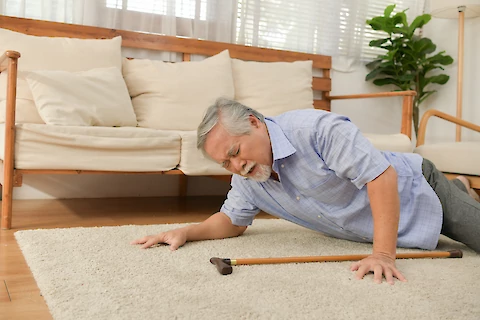
It's common to hear various myths surrounding falls in seniors. These misconceptions, though widespread, can lead to misconstrued perceptions and unnecessary fear. The goal is to shed light on these myths and reveal the truth about falls among seniors. Understanding the reality of this risk is crucial to ensure their safety and to alleviate any concerns born out of misinformation. Let's debunk these fallacies and set the record straight on how to keep our senior loved ones safe and secure.
Myth 1: Falls Are a Normal Part of Aging
Many believe falls simply come with the territory of aging. However, this is not necessarily true. While it's true that our balance can be affected as we age, falling is not an unavoidable destiny. Careful attention to physical fitness, regular check-ups, and mindfulness of one's surroundings can significantly reduce the risk of falling. Keeping seniors active and engaged can help maintain their balance, strength, and overall health.
Myth 2: If a Senior Limits Activity, They Reduce the Risk of Falling
This leads us to the next fallacy that limiting physical activity decreases the likelihood of a fall. On the contrary, regular physical activity can strengthen the body, improve flexibility, and contribute to better balance. These are all vital in fall prevention. Encouraging seniors to participate in low-impact exercises with proper supervision can improve their stability and reduce the risk of falls. Ensure they are cleared by their doctor to do so.
Myth 3: Falls Happen Only to Other People
Another common misconception is that falls only happen to others, particularly those with poor health or physical limitations. The truth is anyone can fall, regardless of their overall health or physical abilities. It is crucial for caregivers and loved ones to create an environment free from hazards, such as clutter or tripping hazards, to ensure the safety of the seniors in their care.
Myth 4: Falls Are Not a Serious Health Concern
This myth is among the most dangerous misconceptions. Many do not realize that falls can lead to serious injuries, including fractures and head injuries. These can significantly impact a senior's quality of life. Moreover, fear of falling can limit a senior's activities, leading to physical deconditioning and depression. Hence, taking steps to prevent falls is crucial.
Myth 5: Home Modifications for Fall Prevention Are Expensive
The prospect of modifying a home for fall prevention can seem daunting and costly. However, many effective modifications are quite affordable – such as installing grab bars in the bathroom, securing loose rugs, or improving lighting. Even small changes can make a big difference in reducing the risk of falls.
Connect With Senior Helpers San Jose
Understanding the realities of falls in the elderly is the key to ensuring their safety and maintaining their quality of life. Myths can create unnecessary fear and complacency. By debunking these common misconceptions, we can take informed actions to prevent falls and their serious implications. If you're worried about a senior loved one's risk of falling, don't hesitate to contact us at Senior Helpers San Jose. We provide services in San Jose, Santa Clara, Santa Cruz, and Campbell to help you ensure a safe and secure environment for your elderly loved ones.